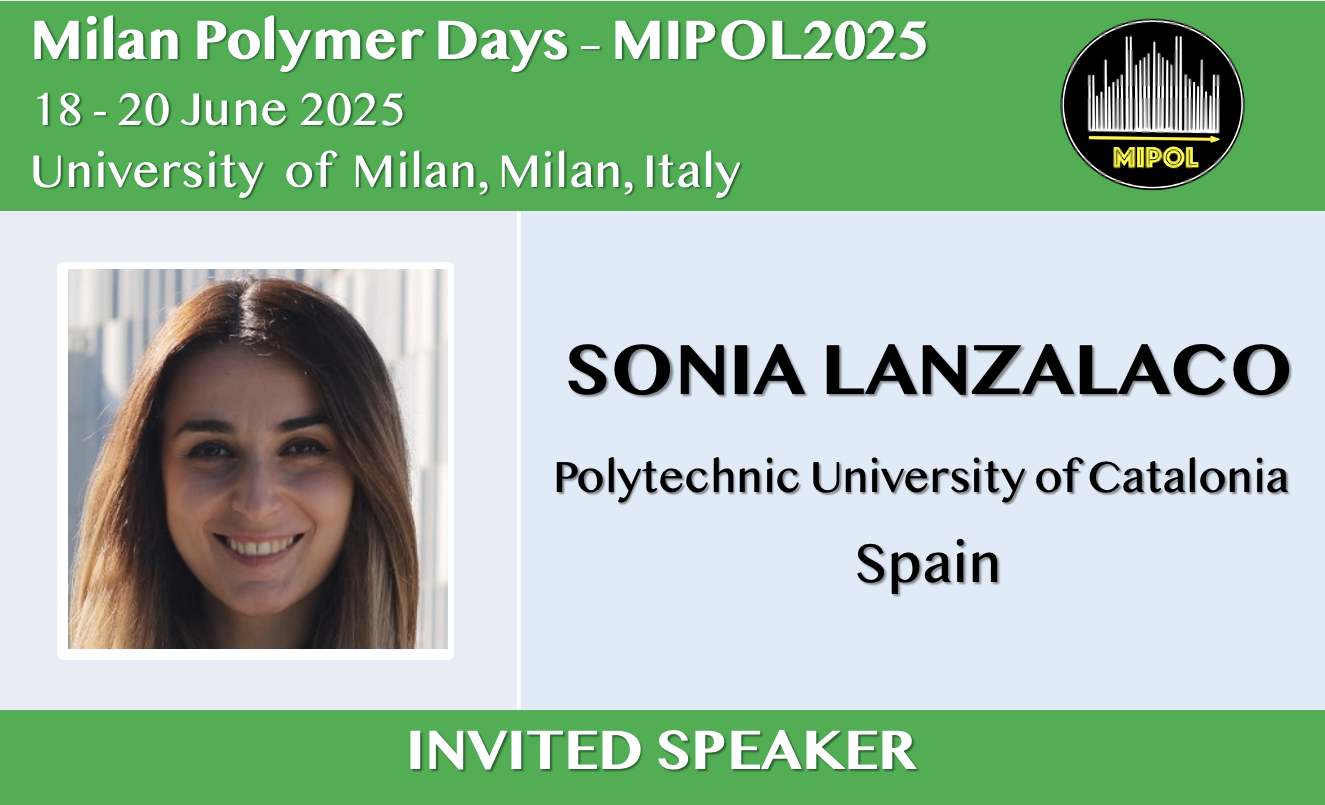"Biopolymers & electrochemistry: a sustainable solution”
Abstract

Feeding long-term sustainability to our planet is becoming a major must, given the urgent need to preserve our natural resources, reduce pollution and protect the natural ecosystems. New paradigm towards green chemistry, sustainability, and circular economy in the chemical sciences must be developed, in order to better employ, reuse, and recycle the materials employed in every aspect of modern life. Following this approach, electrochemical reactions have found technological applications in various fields, including electrochemical synthesis, energy storage, and environmental remediation [1]. Sustainability and electrochemistry are therefore closely related. In this talk, the utilization of electrochemical tools together with bio-based or sustainable materials is presented and divided into three main sections. First, the exploration of new synthetic routes to reduce the toxicity of residual monomer and other chemicals employed (initiators, surfactants) during the fabrication of polymer hydrogels, one of the most promising groups of biomaterials. With a similar approach to a previously developed "green" and clean production of polymer nanogels, largely used in biomedicine, based on the recourse to high energy irradiation, electrochemical advanced oxidation technologies were used to crosslink hydrogels of poly(vinylpyrrolidone)(PVP) by means of electrogenerated hydroxyl radicals. This facile electrosynthesis route showed that the kind of radicals strongly drives the transformation of the architecture of linear, inert polymer chains into a functionalized nanogel (with -COOH and succinimide groups), more suitable for further conjugation [2]. Second, the conversion of bio-based polymers such as chitosan and agarose, into eco-friendly carbonaceous electrodes, as a suitable choice for promoting sustainability due to their low cost and high activity/selectivity [3]. The porosity of the carbonaceous electrodes enhances the accessibility of reactants to the active sites. Excellent electrocatalytic performance of N-doped chitosan-derived carbons and large surface area agarose-derived carbons are responsible of the high efficiencies achieved (above 95%), allowing the fast destruction of pharmaceutical residues in electro-Fenton treatment. Finally, one of the most appealing and recent trends in the application of biopolymers in electrochemical water treatment. The co-generation of freshwater and sustainable energy in a closed loop where the solar energy is used not only for water purification treatment with porous materials like hydrogels, but also for thermoelectric power generation, by means of material transpiration and diffusion processes. The photothermal electricity production is promoted by hydrogels based on biopolymers (alginate, gelatin) and thermosensistive materials like poly(N-isopropylacrylamide) (PNIPAAm), modified with conducting polymer (CP), as thermal absorber component, used to obtain freshwater from seawater desalination under sunlight. The presence of both electrostatic and hydrogen bonds interactions within the hydrogel are crucial to modulate several key factors, as high water absorption capacity, high water evaporation efficiency, and overall mechanical stability of the entire system.
References
- G. Acosta-Santoyo, J. Treviño-Reséndez, I. Robles, L.A. Godínez, J. D. García-Espinoza Chemosphere 2024, 346, 140573.
- S. Lanzalaco, I. Sirés, A. Galia, M.A. Sabatino, C. Dispenza, O. Scialdone J. App. Electrochem. 2018, 48, 1343.
- G. Daniel, Y. Zhang, S. Lanzalaco, F. Brombin, T. Kosmala, G. Granozzi, A. Wang, E. Brillas, I. Sires, C. Durante ACS Sustain. Chem. Eng. 2020, 8, 14425.
- Y. Zhang, G. Daniel, S. Lanzalaco, A. A. Isse, A. Facchin, A. Wang, E.Brillas, C. Durante, I. Sirés J. Hazard. Mater. 2022, 423, 127005.
- J. Mingot, S. Lanzalaco, A. Àgueda, J. Torras, E. Armelin Adv. Funct. Mater. 2024 34, 2311523.
- N. Borràs, J. Mingot, D. Naranjo, S. Lanzalaco, F. Estrany, J.Torras, E. Armelin Sol. RRL 2024, 8, 240066.
Acknowledgments
Support from project PID2021-125257OB-I00, funded by MCIN/AEI/10.13039/50110001103 (Spain), and PID2022-140378OB-I00 (MICIU/AEI/10.13039/501100011033, Spain; and ERDF/EU), is acknowledged.

